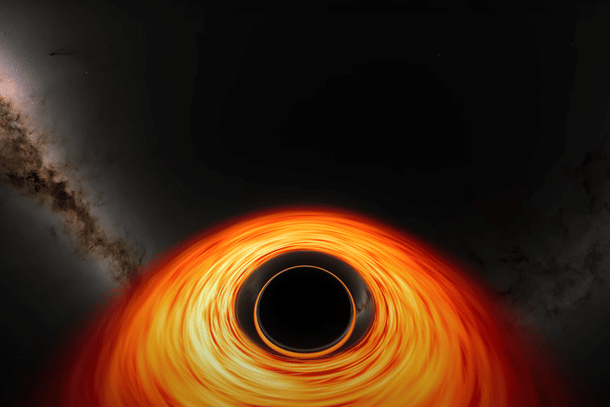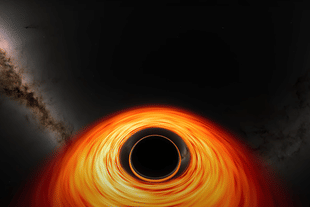Science
What It’s Like To Fall Into A Black Hole — NASA Supercomputer Gives Stunning Virtual Ride Without Breaking A Sweat
Karan Kamble
May 15, 2024, 10:49 AM | Updated Aug 06, 2024, 12:32 PM IST
Save & read from anywhere!
Bookmark stories for easy access on any device or the Swarajya app.


Anyone who has watched Interstellar has a fair visualisation of falling into a black hole, of course with all the creative liberties of the writer and director sprinkled in. Now, a slightly more scientific visualisation of this descent beyond the point of no return has emerged.
Scientists have used a supercomputer at the National Aeronautics and Space Administration (NASA) to give people a virtual experience of a bizarre, bedazzling ride around a black hole and past the event horizon.
The event horizon is a boundary around a black hole beyond which nothing, not even light, can escape.
In a flight that likely no one would want to take except for the most diehard of black hole romantics, we approach a supermassive black hole decorated by a hot, glowing disk of gas called the accretion disk starting from 640 million kilometres away, orbit it briefly, and then proceed past the event horizon — a point of no return.
The simulated black hole’s event horizon spans about 25 million km, or about 17 per cent of the distance from Earth to the Sun.
And here’s an intriguing thought: the monster black hole simulated by NASA is of the kind that’s at the centre of our Milky Way galaxy. It has a mass 4.3 million times that of the humble Sun holding our solar system together.
As one might imagine, the NASA simulation is an extraordinary light show with generous amounts of stretching, squeezing, bending, and swirling, with the ‘darkness’ at the centre of it all, the singularity, getting ever closer before we are consumed by it.
A singularity is a region of infinite density at the centre of a black hole. Here, the laws of physics as we know them break down.
In another visualisation presenting a different scenario, we only fly around a black hole instead of taking the dangerous plunge, thanks to the kindness of the creator of these visualisations, Jeremy Schnittman, an astrophysicist at NASA’s Goddard Space Flight Center in Greenbelt, Maryland, the United States of America (US). Schnittman had the help of fellow Goddard scientist Brian Powell.
These awe-inspiring visualisations were made possible by the incredible powers of NASA’s Discover supercomputer stationed at the NASA Center for Climate Simulation within the Goddard Space Flight Center.
“On a typical laptop, computing this simulation would have taken more than a decade,” NASA says in the video. The supercomputer got it done in five days while using only 0.3 per cent of its processing power. The project generated about 10 terabytes of data.
“People often ask about this, and simulating these difficult-to-imagine processes helps me connect the mathematics of relativity to actual consequences in the real universe,” Schnittman said in a NASA release.
Schnittman might fit the description of a hardcore black hole romantic because he believes: “If you have the choice, you want to fall into a supermassive black hole.”
If the black hole isn’t massive enough, such as stellar-mass black holes up to about 30 solar masses, you run the risk of getting ripped apart from head to toe in a process that astronomers aptly call spaghettification.
In any case, the couple of NASA simulations we now have give us a safe, at-home, closer look at the consequences of Albert Einstein’s general theory of relativity and what they mean for anyone taking a ride around a supermassive black hole.
Karan Kamble writes on science and technology. He occasionally wears the hat of a video anchor for Swarajya's online video programmes.





